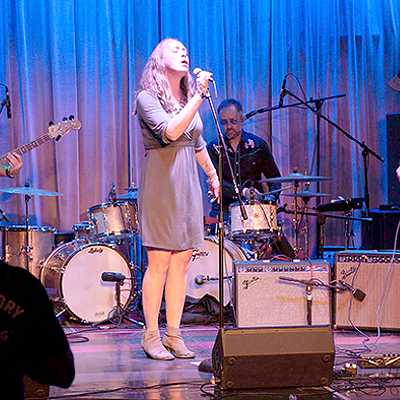Every Christmas, Buckle is said to have written, we are all "one Nutcracker closer to death."
Despite the prevalence of such seasonal zingers aimed at America's annual cornucopia of Nutcrackers, Fisher doesn't believe Buckle's remark is as bad as it sounds. She argues in her entertaining, scholarly book that Buckle comes close to an unacknowledged truth: The ubiquitous ballet, she says, has become an important annual ritual for North Americans, a recurring event nearly on a par with birthdays, marriages and funerals. All of these "signposts on life's journeys" mark out the years between birth and death, Fisher notes, but The Nutcracker enjoys a few advantages. It's the only one that reliably comes with dancing candy canes, snowflakes and mice, and a glorious score by Tchaikovsky.
Debuting in Russia in 1892 to decidedly mixed reviews--critics thought the music was wasted on the strange trifle of a story--The Nutcracker has never been too popular in its native land. But it has triumphed in its adopted countries, the United States and Canada.
Like any immigrant worth his or her green card, the dance has adapted to its new environment and taken on as many new meanings as there are regions to host it. A Bayou Nutcracker entrances Louisiana's Cajuns; hula dancers are a hit with Hawaiians. Mark Morris sets his Hard Nut modernly in the pop '60s, and Donald Bryd puts his in Harlem. In Tucson, Fisher points out, A Southwest Nutcracker bristles with cacti and coyotes.
The Old Pueblo manages to come up with four or five separate Nutcrackers every December, each with its own distinct style. The Tucson season started early this year, with a couple of traveling troupes that both alluded to the ballet's beginnings. The Moscow Ballet brought a rendition from the mother country, and Suzanne Farrell Ballet did an excerpt from the Americanized version by the Russian George Balanchine.
Still to come is a virtual avalanche of local Nutcrackers. The two leading local companies, Ballet Tucson and Tucson Regional Ballet, manage to up the ante each year, tweaking the choreography and scenery, and bringing in guest stars to supplement their regiments of well-trained local students. Ballet Tucson has enlisted soloists from American Ballet Theater, while Tucson Regional has countered with principals from San Francisco Ballet.
This year, Tucson Regional Ballet wins the music competition, giving the only local performances with live music. The ballet has scored the services of some 30 Tucson Symphony Orchestra musicians, to be led by Robert Bernhardt, the popular former TSO conductor. The dancers return the favor to the orchestra by dancing excerpts from their Southwest Nutcracker at the TSO holiday show the weekend before Christmas.
Phoenix-based Ballet Arizona will not make a Nutcracker pilgrimage to Tucson this year, repeating last year's no-show. But those who go north will be rewarded by hearing a full orchestra play Tchaikovsky; the Phoenix Symphony rejoins the Ballet Arizona Nutcracker after an absence of four years.
The downside of all Tucson's Nutcrackerly riches is that so many of the performances take place on the same weekend, Dec. 12-14. The overlap is inadvertent.
"I have to take the dates I can get at Centennial Hall," explains Mary Beth Cabana, Ballet Tucson artistic director. Echoes Linda Walker of Tucson Regional Ballet, "We have to get our dates (at Leo Rich Theater) way out. It's unfortunate that it's the same weekend." But, she adds, "The city is only getting bigger," and the audience keeps growing.
Weekend One, Friday-Sunday, Dec. 5-7. Way down in Sahuarita, Continental Ballet is first up, with a traditional full-length production. Using sets hired from professional theater companies, this 18-year company puts some 75 dancers on the stage. The performers include guest artists, advanced students and local children. Shows are in Sahuarita Auditorium, at Interstate 19 and Sahuarita Road, at 7 p.m. Friday, Dec. 5, and Saturday, Dec. 6, and at 2 p.m. Sunday, Dec. 7. Tickets, available at the door, are $12 general, $10 seniors, $7 students with ID and children under 12. Info at 326-7887.
The third annual Sugar Plum Tea, a benefit at the Arizona Inn for Ballet Tucson, isn't exactly a Nutcracker, but it gives a taste of musical sugarplums to come. Costumed dancers stroll; the Tucson Arizona Boys Chorus sings; and harpist Christine Vivona plays. Diners feast on high tea, at three seatings, at 11 a.m., 3 p.m. and 7 p.m on Saturday, Dec. 6. Tickets cost $75. Info at 903-1445.
Weekend Two, Friday-Sunday, Dec. 12-14. This is the big weekend, with multiple performances of three separate productions in Tucson.
Ballet Tucson returns to the UA's Centennial Hall for a full-fledged traditional Victorian Nutcracker, complete with gem-colored velvet costumes, falling snow and spectacular painted scrims. Choreographed by Cabana, this largest and most professional of the local productions features some 150 dancers, ranging from tiny angels to impressive advanced students to imported stars. Reprising last year's roles of Sugar Plum Fairy and Cavalier are Amanda McKerrow of ABT and John Gardner, a guest star and former regular with ABT and White Oak Dance Project.
"This is an opportunity to see dancers of a very high caliber," Cabana says. "Amanda and John are the cream of the crop. In one breath, they're talking about coming to Tucson, and in the other breath, they're talking about performing at the Bolshoi Theater." The pair will dance in Russia before flying to Tucson to take to the stage.
Ballet Tucson's shows are at 7:30 p.m. Friday, Dec. 12; 2 and 7:30 p.m. Saturday, Dec. 13; and 2 p.m. Sunday, Dec. 14, at Centennial Hall. Tickets, $23-$32 general, $20-$25 for children, students and seniors, are available at the box office. Info: 621-3341.
Tucson Regional Ballet has become justly famous for its charming rattlesnake- and cowboy-laden Southwest Nutcracker. Coyotes replace the mice; the Sugar Plum Fairy metamorphoses into Prickly Pear Fairy; and the European Clara becomes a Mexican Maria. Artistic director Walker, who shares choreography credit with former associate Carolyn Wallace and current associate Gary McKenzie, reports, "Over the years, we just started talking with the TSO. We're very fortunate to get them, and we've enjoyed working with them. Bob Bernhardt is so good with the kids; he's great to work with."
Catherine Winfield and Chidozie Nzerem, soloists from the San Francisco Ballet, dance the Prickly Pear Fairy and her Caballero. Alexis Mondragon, 16, a wonderfully supple local dancer who's studied with the Kirov Ballet, returns as Maria on Saturday night and Sunday. Brittany DeGrofft and Jessica Holland alternate the role on Friday evening and Saturday afternoon.
Tucson Regional Ballet dances A Southwest Nutcracker, accompanied by TSO musicians, at the TCC Leo Rich Theater at 7:30 p.m. Friday, Dec. 12; 2 and 7 p.m. Saturday, Dec. 13; and 1 and 4:30 p.m. Sunday, Dec. 14. Tickets cost $28 for adults and $19 for children, students and seniors, plus a TCC charge. They're available at 321-1000 or www.ticketmaster.com, or at the TCC box office. Info: 791-4266.
A Time to Dance, a local children's studio run by artistic director DeeDee Doell, presents a full-length Nutcracker at the Berger Theater at the Arizona School for the Deaf and Blind. Hannah Goff reprises the role of Clara; Nick Urman plays the Nutcracker for the first time; Caitlin Tavenner dances the Spanish segment. The shows are at 2 p.m. Saturday, Dec. 13 and Sunday, Dec. 14. Tickets, available at the door, are $10. Info: 320-1366.
Weekend Three, Friday-Sunday, Dec. 19-21. Ballet Magnificat, the performing troupe of Creative Dance Arts studio, dances a one-hour Nutcracker choreographed by artistic director Kandis Meinel.
"We do most of Act I and all of Act II," reports Meinel. "Everything except the battle scene."
After intermission, students from the studio will dance a selection of jazz, modern, tap and flamenco. The studio, founded in 1987, has been staging a Nutcracker for about six years. This year, the troupe is getting the advice of some top-flight pros. George Zoritch, who once danced with the legendary Ballets Russes de Monte Carlo, sits in on rehearsals. And Yen-Li Chen Zhang, a Ballet Arizona principal, and Miguel Garcia, now retired from Ballet Arizona, have been training the teens who will dance the Sugar Plum Fairy and Cavalier: Rebekah Martin of Tucson and Chandler resident Steven Bain, a student of Chen Zhang's.
The shows are at 1 and 6 p.m. Saturday, Dec. 20, at Crowder Hall, in the UA Fine Arts Complex. Tickets--$15 general; $10 for ages 12 and under, and ages 55 and up--are available at the studio, 5741 N. Oracle Road, north of River Road. Info: 887-5658.
Last chance for Nutcracker diehards is the Tucson Symphony Orchestra's Home for the Holidays pops concert, conducted by George Hanson. The show also features mezzo-soprano Korby Myrick, Mariachi Aztlan of Pueblo High School and St. Philip's bell ringers. Tucson Regional Ballet dancers will perform Nutcracker excerpts at the concerts, in the TCC Music Hall, at 7:30 p.m. Friday, Dec. 19; 11 a.m. and 7:30 p.m. Saturday, Dec. 20; and 2 p.m. Sunday, Dec. 21. Tickets--$7.25-$10.25 for the Saturday matinee, $18-$40 for the others--are available at the box office. Info: 791-4266.














